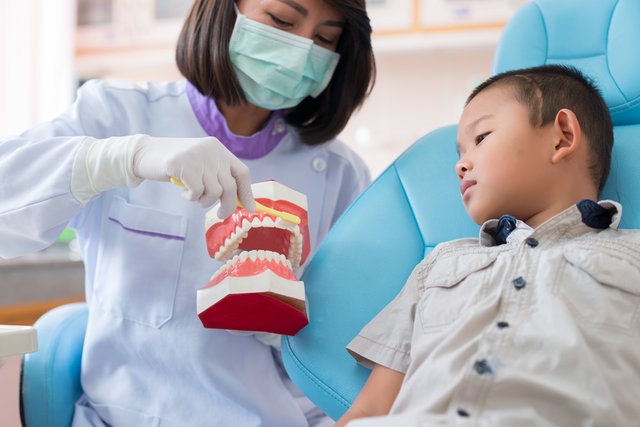Prevention of Cavities in Children: What Parents Should Know
Tooth decay is one of the most common dental diseases in children. According to the WHO, more than 60% of children under 6 years of age are affected by this disease. It would seem that baby teeth are replaced by permanent teeth anyway, but the development of oral hygiene habits and the general health of the dental system begins with them. In addition, cavities in baby teeth can lead to serious complications – inflammation, pain, crookedness, and even digestive problems. In this article, we explain how you can prevent tooth decay in children and what mistakes parents most often make.
1. Proper hygiene from the first months of life
Many parents believe they should not start brushing their children's teeth until they completely erupt. In fact, oral care begins long before the first tooth erupts. Even in infancy, wiping the baby's gums after feeding with a sterile, moist gauze pad or special silicone finger pads is recommended.
Immediately after the first tooth appears – usually at the age of 6-8 months – you should use a baby toothbrush with soft bristles. The paste can be used from the first tooth, but it is essential to choose products that are appropriate for the child's age and have a low fluoride content.
2. The role of nutrition in preventing caries
Sweets are the biggest enemy of children's teeth. Sticky sweets are especially dangerous: caramel, lollipops, jam, cookies, etc. They stick to the teeth and remain in the oral cavity for a long time, creating a favorable environment for bacterial growth. Bacteria convert sugar into acid, which destroys tooth enamel.
Without nutritional control, cavity prevention is not possible. It is essential to limit the intake of sugar, sweet drinks, and soda. Particularly harmful is the so-called bottle caries – a disease that occurs in babies who fall asleep with a bottle of sweet beverage or infant formula. Sugar residues in the mouth contribute to the formation of caries already at the age of 1-2.
The diet should be varied and contain enough calcium, vitamin D, and phosphorus, which are involved in the formation of healthy tooth enamel. Dairy products, eggs, fish, vegetables, and nuts are useful.
3. A visit to the dentist is not only because of the pain
A common mistake that parents make is to go to the dentist only when there are obvious problems. However, regular examinations are necessary to prevent tooth decay: from the first year of life, at least every 6 months.
A pediatric dentist not only detects the early stages of caries, which are not visible to parents, but also provides professional dental hygiene, strengthens tooth enamel with silver diamine fluorided treatment, and teaches the child the correct technique of brushing teeth.
4. Fluoride: Benefits and precautions
Fluoride is one of the main ingredients in protecting teeth from cavities. It strengthens tooth enamel and makes it less susceptible to acids. However, too much fluoride can be dangerous in childhood, especially if the child swallows toothpaste. Therefore, it is necessary to use special pastes with a minimal fluoride content (up to 500 ppm) and an amount the size of a pea for babies. In addition, in areas with a lack of fluoride in the water, dentists may recommend additional sources of fluoride: drops, chewable tablets, and varnishes.
5. Characteristics of the bite and their influence on dental health
An incorrect bite, crowded teeth, or malocclusion can also promote the development of tooth decay, as such teeth are more difficult to clean. It is important to pay attention to the child's jaw development and habits (e.g. thumb sucking, lip biting) and to consult an orthodontist in good time.
6. Formation of hygiene habits
Children do not know from birth how important it is to brush their teeth. It is the responsibility of parents to instill these habits. In the initial stages, an adult should do the cleaning until the child learns to do it independently (usually after 6 years). Even if the child "brushes their teeth" on their own, the adult must supervise the process and, if necessary, help the child brush their teeth. To motivate your child, you can use colorful toothbrushes, hourglasses, and special apps with cartoon characters that turn brushing into a game.
